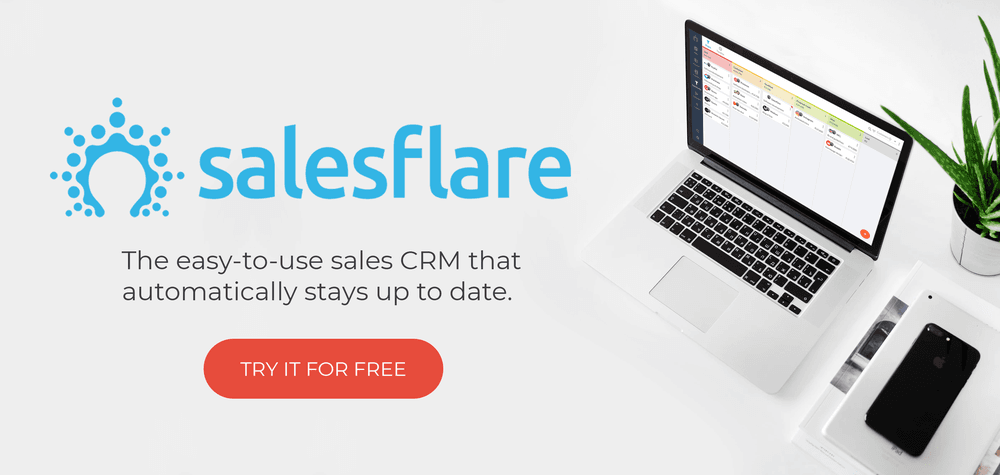Come creare il sito web perfetto per una startup
Un blog ospite di Ryan Gould (Vicepresidente dei servizi di strategia e marketing di Elevation Marketing)

If you want to create the perfect startup website, first know why a website is important. Too often startups jump into building a website without a clear vision of why they’re doing it and what they want to accomplish. Your website is the sun around which all your other strategies rotate. And the end goal of those strategies is conversions. So, the perfect startup website should be designed and optimized with conversions in mind.
1. Il design
To accomplish its goal, your site must have good design, a good user experience with ease of use, consistency and good content. Did you know 38% of users will leave your website if they find it unattractive and 75% of users admit to making judgments about a company’s credibility based on their website’s design?
Alcune cose da ricordare:
1. Mantenere la semplicità. Meno è meglio.
A Google study found websites with high visual complexity lead to more negative first impressions than websites of medium or low complexity – and users made those judgments in 17 milliseconds. You only have one to make a good first impression. Many agencies that offer webflow development services advise new website owners to always start small and simple because you can always do a redesign in the future.
2. Limitarsi a un paio di font in diverse grammature e varianti..
Just because you have a whole bunch of fonts, doesn’t mean you should use them all. Each font conveys a feeling and you know what too many feelings can cause? Confusion. Re-read #1.

3. Siate coerenti e parsimoniosi con il colore
Quando decidete di costruire un sito web personale, iniziate con i colori del vostro marchio e usateli come colore primario, scegliete 1 o 2 colori d'accento, poi un colore di sfondo. E considerate la vostra attività. Come dice Neil Patel, usate il colore nel modo giusto, al momento giusto, con il pubblico giusto e per lo scopo giusto.
4. Assicuratevi che il sito sia ottimizzato per i dispositivi mobili
This can’t be stressed enough. More than half of global internet traffic now comes from mobile devices. Google ranks mobile-friendly sites higher in mobile search results and last year started using the mobile versions of web pages for indexing and ranking.
2. SEO
One thing you have control over from the start is your on-page (or on-site) search engine optimization (SEO). That’s what helps determine your rank on search engine results pages (SERP) – the higher on the SERP you are, the better.

Ci sono alcune altre tattiche SEO che potete utilizzare, ma ecco i fattori SEO on-page che dovete considerare subito:
1. Tag del titolo
The title tag is what people see in search engines. It’s clickable and ideally it says what the page is about. Include one of your primary keywords in the title when possible (but don’t stuff keywords!) and keep it to 55-60 characters so it doesn’t get cut off in search results.
Why it’s important: Google looks at the title tag and compares it to the rest of the content to judge its relevance – and relevance is a factor for your rank in SERP.
2. Meta descrizione
Si tratta di un'altra opportunità per mostrare il contenuto di una pagina. La meta descrizione è ciò che viene visualizzato sotto il titolo e l'URL nella SERP. Dovrebbe essere lunga circa 160 caratteri (una lunghezza maggiore viene tagliata nei risultati di ricerca) e naturalmente contiene una o due parole chiave.
Why it’s important: The meta description doesn’t factor in ranking, but it does improve click-through rate because it shows users a little more about the page content of your startup website. If people like what they see, they’ll click.
3. URL
Your URL helps identify the structure of your domain, but beyond that, it’s yet another place to use a keyword.
Why it’s important: The URL itself isn’t a major ranking factor, but when you include a keyword in a URL, it may help rank – it also helps identify what the page is about.
4. Testo alternativo
Il testo alt è per le immagini ed è contenuto nel codice della pagina. Il suo scopo principale è quello di descrivere le foto alle persone con disabilità visive che utilizzano gli screen reader.
Why it’s important: Includere una parola chiave primaria nella descrizione dell'immagine può aiutare i crawler dei motori di ricerca a indicizzare l'immagine e contribuire alla SEO on-page.
And don’t forget:
- Your company name and contact information (you’d be surprised how many companies don’t include thorough contact information).
- Assicuratevi che le vostre pagine si carichino rapidamente (potete perdere 7% delle vostre conversioni per un ritardo di 1 secondo nel tempo di caricamento della pagina).
3. Contenuto
Where “more content” was the old mantra, now it’s more about topics and the content you create around those topics. Keywords on their own aren’t quite as important as they used to be, but keywords used in relevant content that matches searchers’ queries are.
Technically this is still under on-page SEO, but it’s the content that’s really the important thing. Google wants users to find answers – the best answers – quickly. Better, relevant content accomplishes that, so any startup website built around fresh, consistent content will be rewarded.
Ponetevi queste domande:
- Il mio contenuto è ricco? There’s no minimum number of words per page, but the more thorough the content, the better you’ll rank. A good rule of thumb is a minimum of 300 words on page. Longer content should be broken up with images, bullet points, Intestazioni H1 e H2 e citazioni.
- Il mio contenuto è rilevante per la query di ricerca? If someone searching for “spring dresses” lands on a page for winter formals, they are going to bounce right off the page – and likely your site and your life.
- Il mio contenuto è user-friendly? Is it readable? If you’re not sure, try running it through a controllore di leggibilità). L'ortografia e la grammatica sono corrette (è importante!)?
- Sto duplicando contenuti in diverse pagine? I motori di ricerca riconoscono i contenuti duplicati e vi penalizzeranno. Assicuratevi di avere una varietà di contenuti ben scritti e ottimizzati sul vostro sito.
Altri aspetti da considerare per il sito web della vostra startup:
Aprite un blog: Ogni post del blog è un'altra pagina di SEO! Aprire un blog, write authoritative posts with relevant (there’s that word again) content and optimize it for search. The optimal blog length in part depends on your industry, your website, and your audience, but in general, blogs that are 1,600-1,900 words rank better. That doesn’t mean use 100 words where 10 will do just to fill space. Concentrate on the quality of the content rather than the length.

Scrivete per i vostri clienti: Don’t write stiff, formal content aimed at search engines. The search engines know better and so do your customers. Write naturally, as if you’re having a conversation because, really, you are.
Chiedete un feedback: Feedback dei clienti è una parte spesso trascurata di una strategia di marketing complessiva e del vostro marchio. Consentendo feedback sul vostro sitoIn questo modo è possibile migliorare l'esperienza dell'utente del sito web, le offerte e la soddisfazione dei clienti. Per aiutare i visitatori del vostro sito a vivere un'esperienza ancora migliore, dovreste anche concentrarvi su protezione del sito web e un design UI/UX accattivante.
Includere immagini e video: Contenuti web con immagini e video 94% meglio del contenuto senza. The fact is, visuals make more of an impression in people’s minds and they are remembered better than text. And when it comes to SEO, just remember that alt text!
4. Per riassumere
Un buon design, contenuti di qualità e SEO sono i tre fattori più importanti per un sito web perfetto per una startup, che si posizioni nelle SERP, attragga clienti e, infine, realizzi vendite. Dopo tutto, il motivo per cui avete un'attività è che avete qualcosa da vendere!
Un po' di cose su Ryan:
Dalle istituzioni tradizionali di Fortune 100 alle start-up inventive, Ryan porta una vasta esperienza a Elevation Marketing con una vasta gamma di clienti B2B. Progetta e gestisce abilmente la realizzazione di programmi di marketing integrati e crede fermamente nella strategia, non solo nella tattica, che allinea efficacemente i team di vendita e di marketing all'interno delle organizzazioni
.

Speriamo che questo post vi sia piaciuto. Se vi è piaciuto, spargete la voce!
👉 Potete seguire @salesflare su Twitter, Facebook e LinkedIn.
if(window.strchfSettings === undefined) window.strchfSettings = {}; window.strchfSettings.stats = {url: “https://salesflare.storychief.io/startup-website?id=82341412&type=2”,title: “How to Create the Perfect Startup Website”,id: “b4bf56dd-9b24-4318-a472-b8522fe85e05”}; (function(d, s, id) { var js, sjs = d.getElementsByTagName(s)[0]; if (d.getElementById(id)) {window.strchf.update(); return;} js = d.createElement(s); js.id = id; js.src = “https://d37oebn0w9ir6a.cloudfront.net/scripts/v0/strchf.js”; js.async = true; sjs.parentNode.insertBefore(js, sjs); }(document, ‘script’, ‘storychief-jssdk’))- Fix It Fast - 3 Aprile 2024
- Salva le tue e-mail - 21 Dicembre 2023
- Traccia qualsiasi relazione - 1 Dicembre 2023
